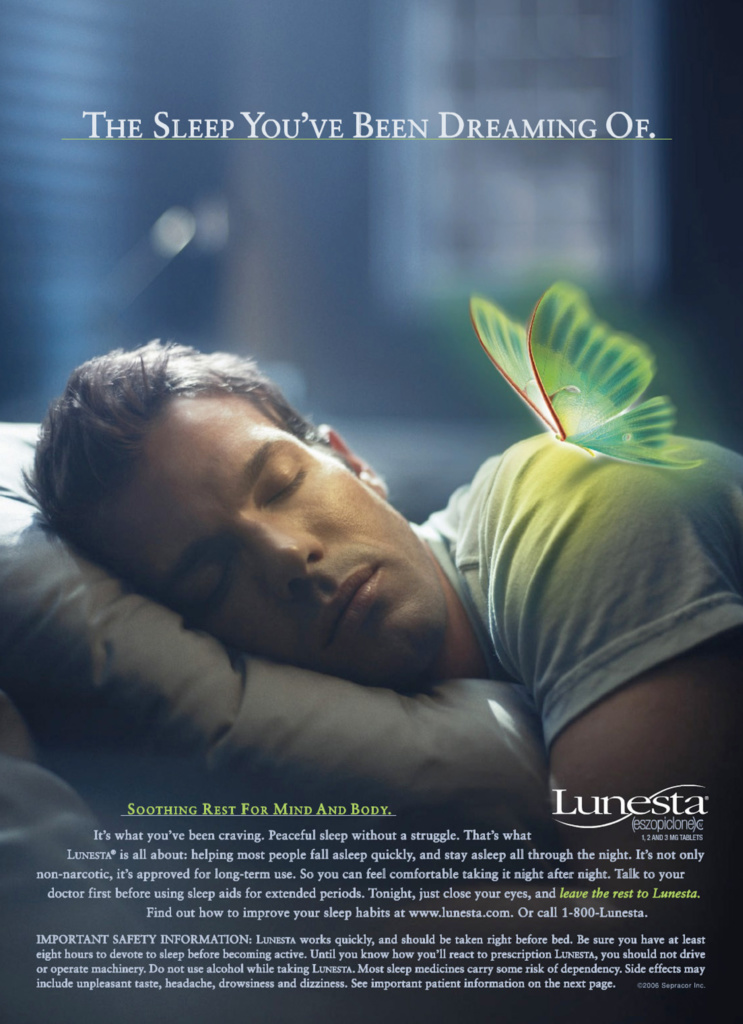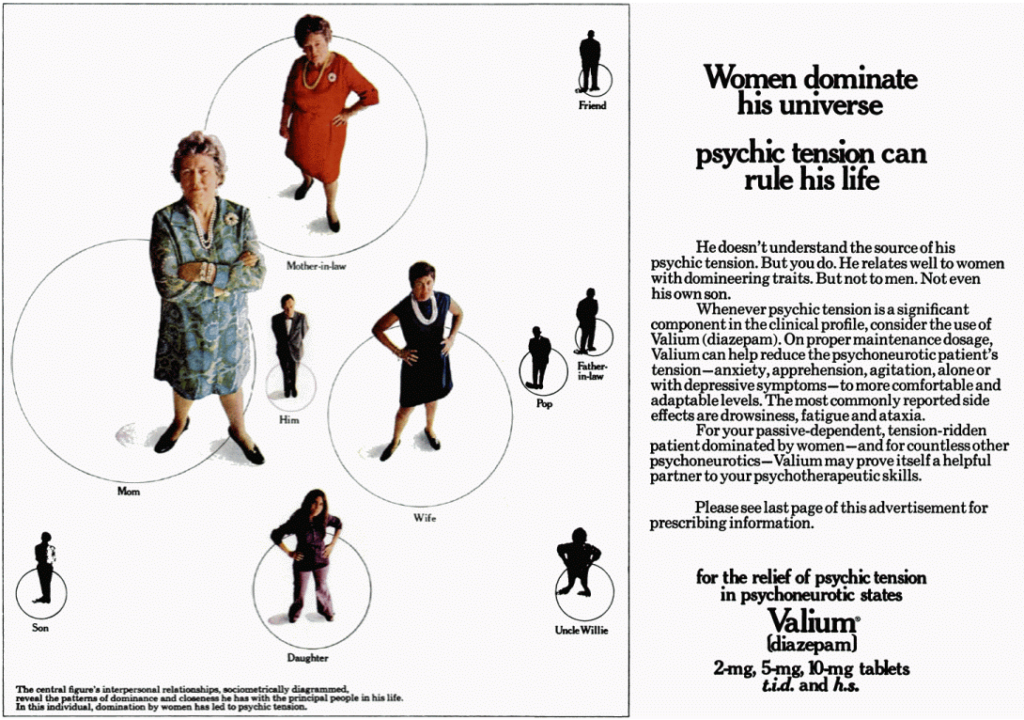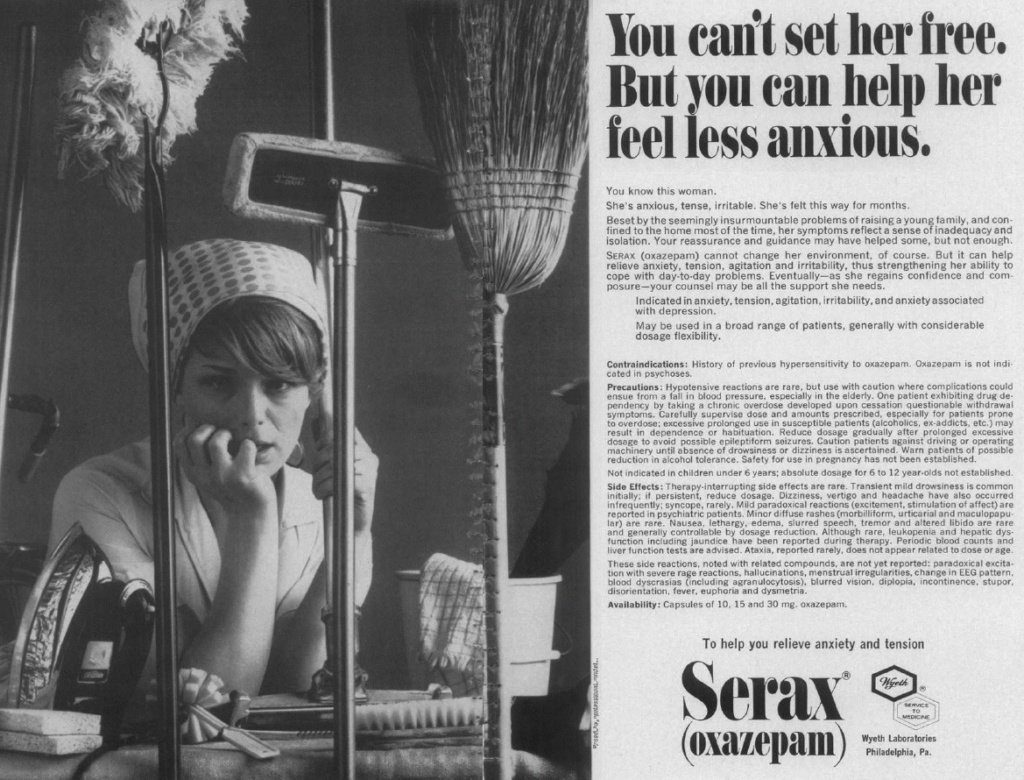
Believe it or not, psychoactive drugs are still sensationalized in the news and media by pharmaceutical companies. Today, you’ll hear a laundry list of possible “side effects” associated with these, which are actually direct effects of the drugs (if you’re in the US or NZ, just listen to the end of any drug commercial)—but there was once a time when drugs were marketed and glamorized in the media without warning of side effects, possibly because it was a different time then and/or because no long-term studies had ever been done to investigate them. As time went on, however, these adverse effects began to show up in the people, who were the metaphorical “guinea pigs,” that had prescribed the medications. This is essentially what happened with benzodiazepines.
Vintage marketing is often eccentric at best. Mostly, it’s concerning.
Despite modern medicine not knowing exactly how psychiatric drugs worked in the brain, nor did they conduct studies on their long-term effects—including adverse effects—psychoactive pharmaceuticals were heavily marketed directly to both doctors and consumers by the pharmaceutical companies who held their patent. Targeted populations and market aim were directed mostly toward women and the elderly. Today, we know a little more about the presentation of symptoms of mental illness and we know a little more about why throwing largely under-studied chemicals at it can do more harm than good. Patents for benzodiazepines expired long ago. They’re no longer heavily marketed in this way.
Sedatives include:
- Benzodiazepines
- Sleeping pills (“z-drugs”)
- Barbiturates
- Major tranquilizers (antipsychotics)
- alcohol
SENSATIONALIZED AND “CREEPY”
The vintage pharmaceutical ads were quite sensationalized and also had a bit of a “creepy” vibe to them. Knowing about and/or experiencing firsthand the long-term consequences of psychoactive drugs, such as benzodiazepines, and their adverse effects make it even creepier, disturbingly scary and shocking
















































